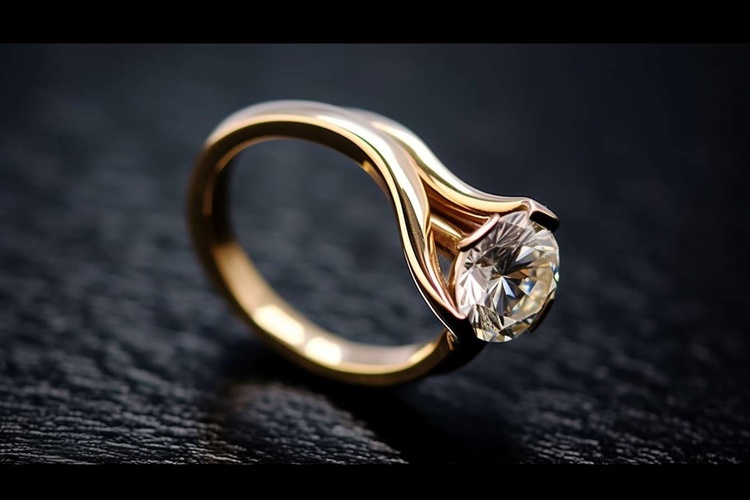How Rings Are Made and Appreciated
Rings come in many shapes, sizes, and materials. This article explains how rings are designed, made, and worn around the world. Learn about different types of rings, the metals and stones used, and how their designs can show creativity and personal style in everyday life.

What Ring Design Elements Matter Most
Ring design encompasses several fundamental components that determine both aesthetics and functionality. The band width, profile shape, and setting style significantly influence how a ring appears on the finger and how comfortable it feels during daily wear. Designers consider proportional relationships between gemstones and metal elements, ensuring visual balance that complements different hand sizes and personal preferences.
Contemporary ring design often incorporates computer-aided design software that allows jewelers to create precise 3D models before production begins. This technology enables customers to visualize their pieces and make modifications before committing to expensive materials. Traditional design principles remain relevant, with considerations for durability, maintenance requirements, and timeless appeal guiding many creative decisions.
Understanding Different Types of Rings Available
The jewelry market offers numerous ring categories, each serving specific purposes and occasions. Wedding and engagement rings remain the most popular, featuring traditional designs alongside modern interpretations that reflect changing social preferences. Fashion rings provide opportunities for self-expression through bold designs, colorful gemstones, and unconventional materials.
Cocktail rings emerged during the 1920s as statement pieces designed to capture attention at social gatherings. Today’s versions often feature large center stones surrounded by smaller accent gems. Signet rings carry historical significance, traditionally displaying family crests or initials, while promise rings symbolize commitment without the formality of engagement pieces. Class rings commemorate educational achievements, and birthstone rings celebrate personal connections to specific months or astrological beliefs.
How Rings Are Made Through Traditional and Modern Methods
Ring manufacturing begins with material selection, where jewelers choose metals like gold, silver, platinum, or alternative materials such as titanium and tungsten. Traditional methods involve hand-forging techniques where craftspeople shape heated metal using hammers and specialized tools on anvils. This approach creates unique texture variations and allows for complete customization throughout the production process.
Modern manufacturing incorporates casting techniques where molten metal fills precise molds created from wax patterns. Lost-wax casting enables mass production while maintaining detail accuracy, making quality rings more accessible to broader markets. Computer numerical control machines can cut and shape metal components with microscopic precision, ensuring consistent results across multiple pieces. Stone setting requires specialized skills regardless of production method, with techniques like prong, bezel, and pavé settings each demanding specific expertise.
Essential Jewelry Materials Used in Ring Construction
Gold remains the most traditional ring material, available in various karats indicating purity levels and different colors achieved through alloy combinations. Yellow gold combines pure gold with copper and silver, while white gold incorporates palladium or nickel for its distinctive appearance. Rose gold gains its warm hue from higher copper content, creating romantic appeal for vintage-inspired designs.
Platinum offers superior durability and naturally white color that never requires re-plating, making it ideal for engagement rings meant to last generations. Silver provides affordable elegance but requires regular maintenance to prevent tarnishing. Alternative metals like titanium and tungsten appeal to individuals seeking unique properties such as extreme durability or hypoallergenic characteristics. Gemstone selection ranges from traditional diamonds to colored stones like sapphires, emeralds, and rubies, with synthetic alternatives offering similar beauty at reduced costs.
Popular Ring Styles Throughout History and Today
Classic solitaire settings showcase single gems with minimal metal interference, creating timeless elegance that transcends fashion trends. Vintage styles draw inspiration from specific historical periods, with Art Deco designs featuring geometric patterns and Edwardian pieces emphasizing delicate filigree work. Contemporary styles embrace minimalist aesthetics or bold statement designs that reflect current fashion sensibilities.
Halo settings surround center stones with smaller diamonds, creating enhanced sparkle and making central gems appear larger. Three-stone rings symbolize past, present, and future, often featuring graduated sizes or different gem varieties. Stackable rings allow wearers to create personalized combinations, mixing metals, textures, and stones according to individual preferences or daily outfits.
Ring appreciation extends beyond mere aesthetics to encompass cultural significance, craftsmanship quality, and personal meaning. Understanding the complexity involved in ring creation helps consumers recognize value in well-made pieces while appreciating the artistic vision that transforms raw materials into treasured accessories. Whether choosing engagement rings or fashion pieces, knowledge of design elements, construction methods, and available options ensures selections that provide lasting satisfaction and meaningful connections to these timeless symbols of human creativity and emotion.




